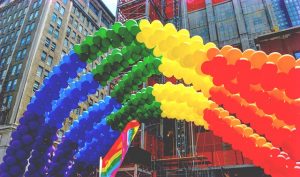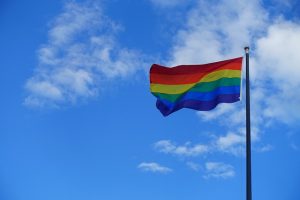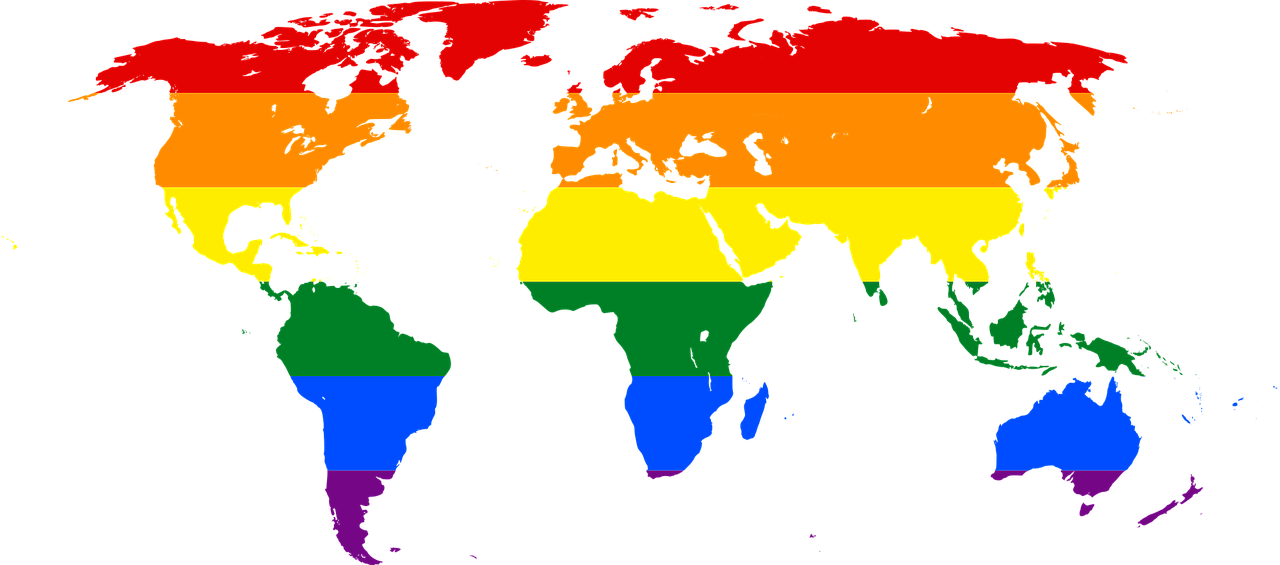June is LGBTQ Pride Month: Celebrating Global Diversity and Advocating for Human Rights
During the early morning hours of June 28, 1969, police officers raided a bar in New York City’s Greenwich Village. On the surface, it may not have seemed very different from any other incident of its kind elsewhere in the country; after all, establishments operating without a liquor license open themselves to legal ramifications. Beneath the thin veneer painted with watercolor laws and codes, though, was a deep-seated saga spurred by prejudice.
Those involved most likely didn’t leave home the night before expecting anything out of the ordinary, but they ended up making headlines. In fact, they went down in history and had a hand in paving the way for future generations. June is LGBTQ Pride Month, an annual tribute to that day and celebration of what it represents.
Digging Deeper

As it turns out, June 28 wasn’t the first time this bar had been graced by unfriendly visits from the police. Like many others of its kind across the country, and the world for that matter, it had become a routine target. This unsolicited attention came about not due to a long-running history of violent incidents and wrongdoing, but simply because it was a popular haunt for members of the gay community.
Though this episode initially paralleled many others throughout the world, it soon distinguished itself from the rest. Officials ultimately forced patrons of the Stonewall Inn into a police van, and this is where the scene took a definitive turn. Rather than quietly bearing the all-too-common harassment, victims and onlookers took a stand.
Pain, frustration and anger borne of ongoing transgressions against the community finally came to a head. People began shouting and throwing bottles at the police officers involved. This localized display of opposition spilled over into surrounding streets, and a widespread uprising took shape.
While the Stonewall Riot is considered the first significant demonstration for homosexual rights, it certainly wasn’t the last. Members and supporters of the LGBT community across the country followed suit, breaking national ground for their generation as well as ones to come. Pride Month arose from this incident and continues to foster understanding, tolerance and equality almost half a century later.
LGBTQ Pride Month: Moving Forward

LGBTQ Pride Month has spread across the United States and even breached its borders to reach global magnitude since originating in 1969. Each year in June, members of the community come together on local, regional, national and international levels to reflect on the past, contemplate current progress and pitfalls and share hopes for a more positive future.
Local businesses and prevalent corporations alike work with communities to help sponsor and plan events, like marches, parades, street festivals, public speeches and other displays. Though some embrace the festivities to celebrate the culture as a whole, others set their sights on the rising generation.
LGBT youth centers are cropping up across the nation as a safe place for younger members of the community. While these centers give the upcoming generation opportunities to share their thoughts and experiences with like-minded individuals, they’re notoriously undermanned and lack essential funding. Numerous mentors see June as the perfect occasion to donate time or money to these havens and kickstart a year-long endeavor.
Still others focus their attention on education; after all, it’s the key to understanding. They encourage people to educate themselves on the history and struggles of the LGBT community or pass their knowledge along to others. Numerous demonstrations around the globe are geared toward just that.
The Rainbow Flag: A Fitting Symbol
In the midst of all the observances of LGBT Pride Month, and throughout the year, the signature rainbow flag of the movement is displayed in full force. Its significance falls right in line with the entire culture having developed around and within the community.
In 1978, an artist, Vietnam war veteran and drag performer, Gilbert Baker designed the flag with the LGBT community in mind. Its colors follow the naturally occurring “Roy G. Biv” pattern and represent the diversity of the community and its surrounding social movements.
LBGTQ: Where Did the “Q” Come from?
Traditionally, you’ll see lesbians, gays, bisexuals and transgenders included in the Pride movement. Recently, though, an extra letter has been working its way into the typical acronym, leaving many people scratching their heads. This “Q” reportedly can stand for a couple different terms: queer and questioning.
In the past, “queer” became a go-to derogatory term directed at those in the LGBT realm. While it was once considered offensive, and still is by some, it’s gaining greater acceptance within the community. These days, people are reverting back to its original definition, which is “strange or odd”. Cleo Anderson of gay rights group, GLAAD pointed out in an interview with USA Today, “Queer is anything that exists outside of the dominant narrative.” In truth, those standards leave very few of us out of the mix.
Questioning covers those who are still in the process of discovering their identity. Both are said to be acceptable as long as no malicious intent lurks in the background. Having said that, queer generally refers to someone who identifies as lesbian, gay, bisexual or transgender whereas questioning describes a person who isn’t yet sure which category he or she falls into.
LGBTQ Pride Month In a Nutshell

June is LGBTQ Pride Month. It dates back almost half a century to an early-morning bar raid that sparked a monumental movement for rights and equal treatment. Annual Pride Month is a time when members of the LGBTQ community and their advocates come together to embrace diversity, celebrate triumphs over adversity and gaze forward at the possibilities to come. Some of the recent milestones to applaud during this year’s Pride Month include:
- May 2017: Former Vice President, Joe Biden encouraged Americans to take a stand against intolerance and violence directed at the global LGBTQ community.
- June 2017: Germany legalized same-sex marriage.
- July 2017: Celebrities and politicians banded together in advocacy of human rights for victims of Chechnya’s LGBT purge.
- July 2017: The Church of England voted to “welcome and affirm transgender members” and followed up in November by raising tolerance of children exploring their gender identities. These movements in favor of the LGBT community were put in place to “…honor the dignity of their humanity without ‘back-turning’, dismissing the other person, or claiming superiority,” as stated by Nigel Genders, the Church of England’s Chief Education Officer.
- August 2017: India’s supreme court refused to legalize homosexuality but declared freedom of sexual orientation to be a fundamental right of its citizens.
- October 2017: California became the first state to allow and legally recognize individuals’ true gender identities on driver’s licenses and other forms of state documentation.
- November 2017: Australia’s senate voted to sanction same-sex marriages.
These are only a few of the positive developments to arise over the year. As June approaches, any number of new advancements lie on the horizon. Celebrate the good, mourn the bad and raise hope and awareness for the years to come. Do so in unity not only in June of 2018, but always.
This content (listed above) can be freely copied and used anywhere, by anyone, for any purpose.
This content was freshly written by us, it is not “recycled” but others may grab it and use it, so we strongly recommend that it be re-written to make it 100% unique text, in order to avoid search engine duplicate content penalties.
If you are pressed for time, or your writing skills are a bit rusty, no problem – we can rewrite it for you. Just use your Articlez.com account, place an order for “Elite” content, and in the “notes” area of your order form paste in this original article and ask us to rewrite it (or to write a fresh one on the same subject).





